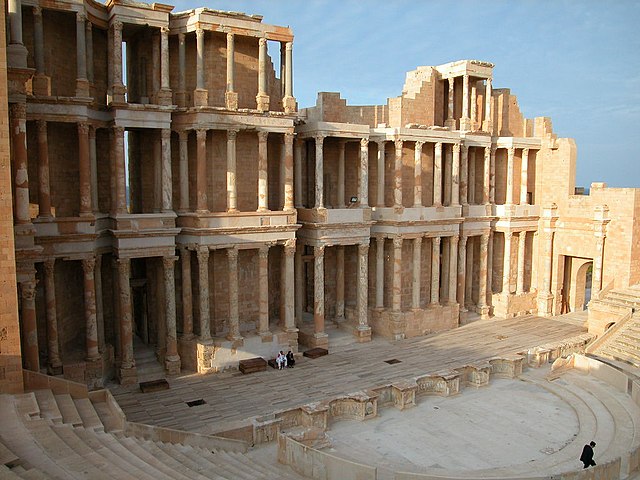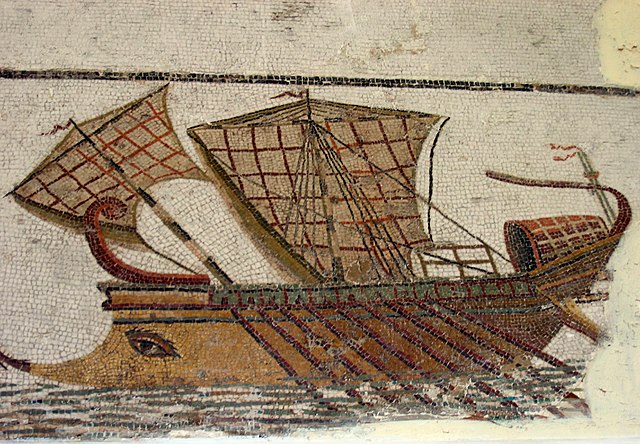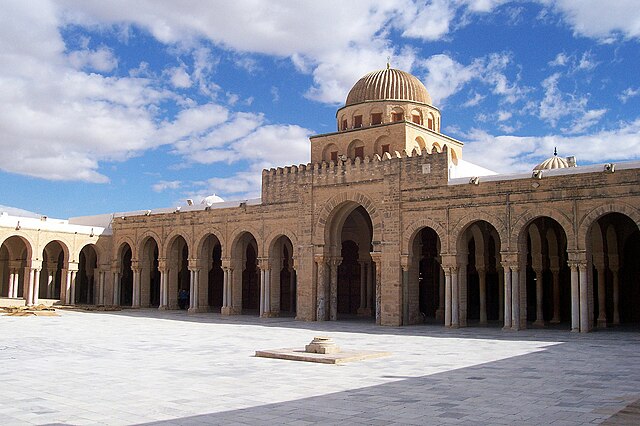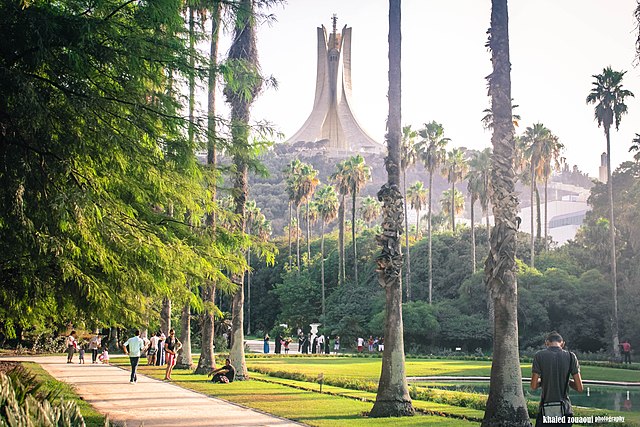Libya, officially the State of Libya, is a country in the Maghreb region of North Africa. Libya borders the Mediterranean Sea to the north, Egypt to the east, Sudan to the southeast, Chad to the south, Niger to the southwest, Algeria to the west, and Tunisia to the northwest, as well as maritime borders with Greece, Italy and Malta to the north. Libya comprises three historical regions: Tripolitania, Fezzan, and Cyrenaica. With an area of almost 1.8 million km2 (700,000 sq mi), it is the fourth-largest country in Africa and the Arab world, and the 16th-largest in the world. Libya claims 32,000 square kilometers of southeastern Algeria, south of the Libyan town of Ghat. The country's official religion is Islam, with 96.6% of the Libyan population being Sunni Muslims. The official language of Libya is Arabic, with vernacular Libyan Arabic being spoken most widely. The majority of Libya's population is Arab. The largest city and capital, Tripoli, is located in northwestern Libya and contains over a million of Libya's seven million people.

Archaeological site of Sabratha, Libya
Leptis Magna
The Atiq Mosque in Awjila is the oldest mosque in the Sahara.
The siege of Tripoli in 1551 allowed the Ottomans to capture the city from the Knights of St. John.
The Maghreb, also known as the Arab Maghreb and Northwest Africa, is the western part of the Arab world. The region comprises western and central North Africa, including Algeria, Libya, Mauritania, Morocco, and Tunisia. The Maghreb also includes the disputed territory of Western Sahara. As of 2018, the region had a population of over 100 million people.
Maghreb head ornament (Morocco)
Roman trireme on a mosaic in the Bardo Museum, Tunisia
The Great Mosque of Kairouan, founded by the Arab general Uqba Ibn Nafi (in 670), is the oldest mosque in the Maghreb city of Kairouan, Tunisia.
Algiers, Algeria








